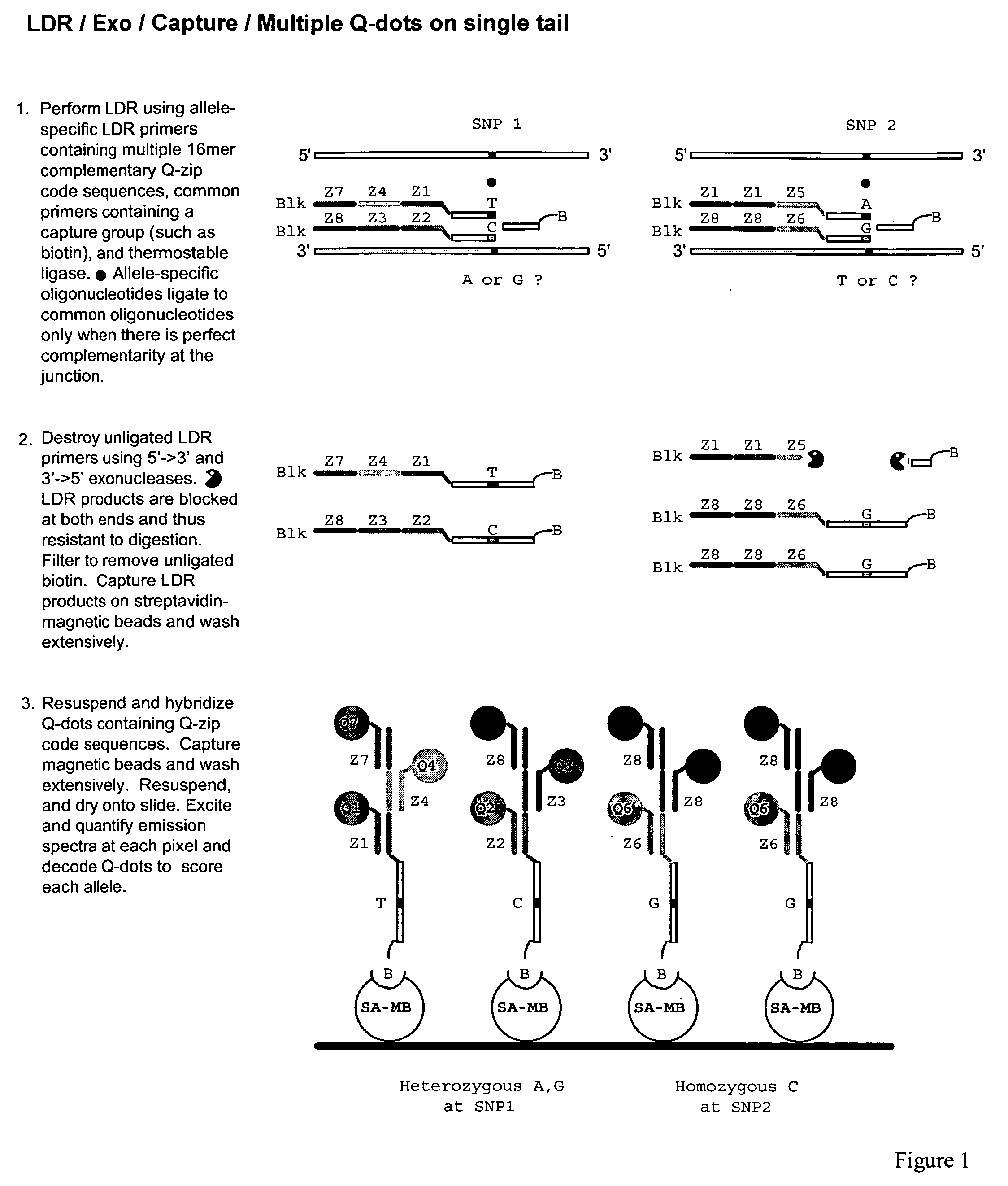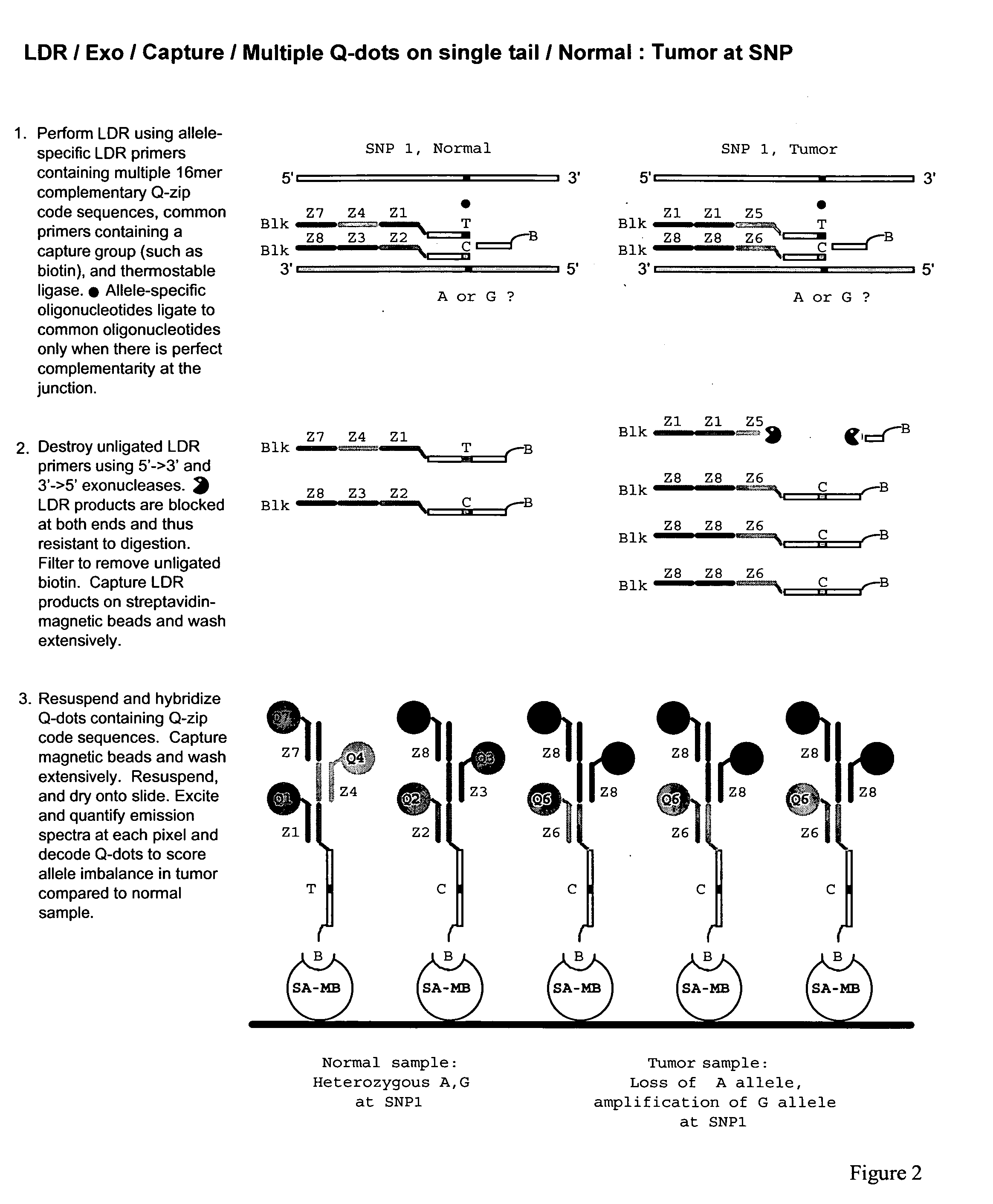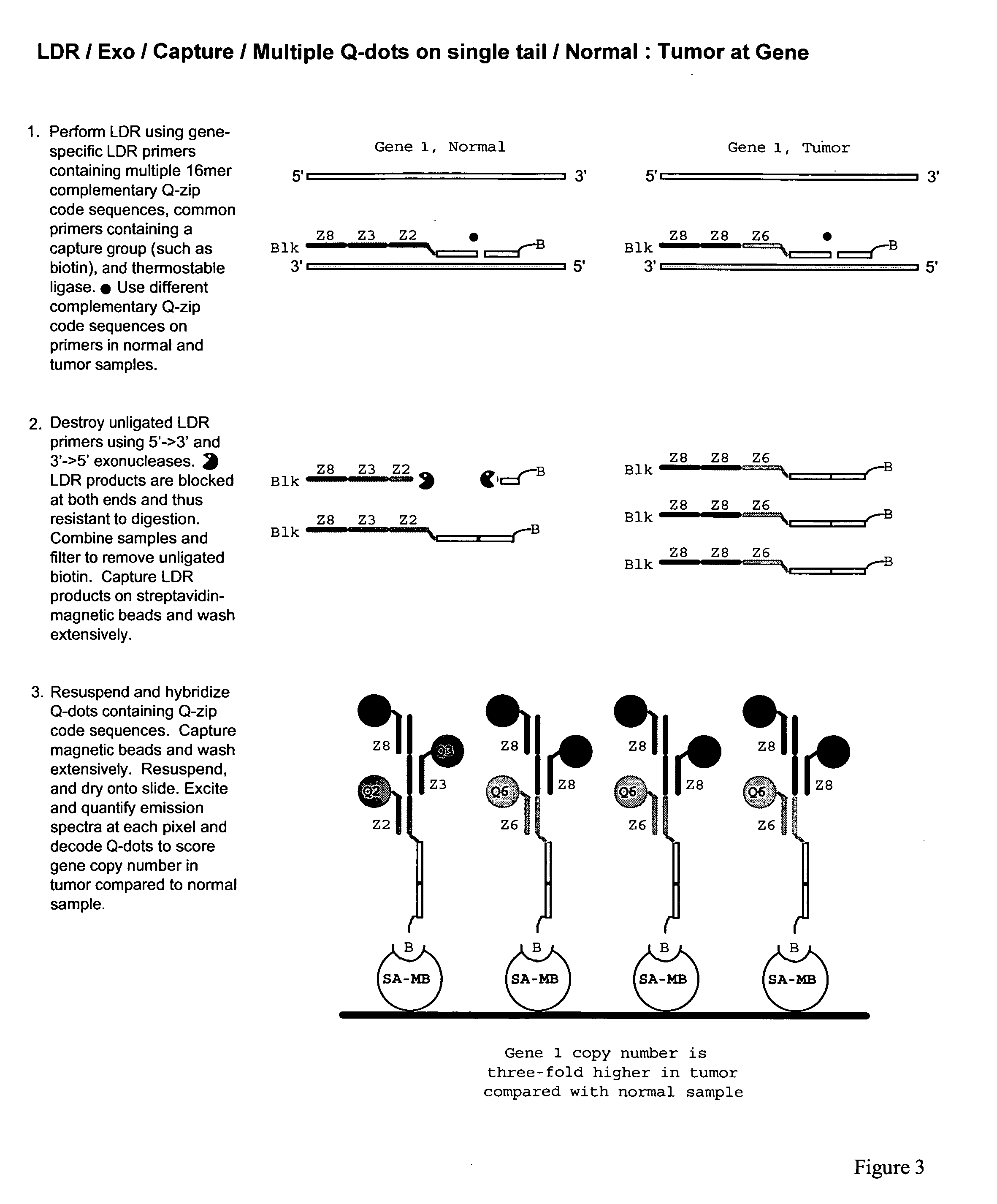Methods for identifying target nucleic acid molecules
a nucleic acid and target technology, applied in the field of target nucleic acid molecules, can solve the problems of interfering with this ligation, and achieve the effect of reducing the cost of manufacturing labeled ldr and rapid and accurate hybridization
- Summary
- Abstract
- Description
- Claims
- Application Information
AI Technical Summary
Benefits of technology
Problems solved by technology
Method used
Image
Examples
example 1
Reagents, Equipment, and Oligodeoxynucleotides
[0401] All routine chemical reagents were purchased from Sigma Chemicals (St. Louis, Mo.) or Fisher Scientific (Fair Lawn, N.J.). Microcon YM-50 spin columns were purchased from Millipore Corporation (Bedford, Mass.). Thin-walled 250 μl PCR-tubes were purchased from the Applied Biosystems Division of Perkin-Elmer corporation (Foster City, Calif.).
[0402] Streptavidin-coated Proactive magnetic microspheres, with a mean diameter of 860 nm and binding capacity of 686 pmol biotin-FITC / mg., were purchased from Bangs Laboratories, Inc. (Fishers, Ind.). Streptavidin-coated quantum dots, with an emission maximum of 608-611 nm and carrying 3 to 7 streptavidin molecules per Q-dot, were purchased from Quantum Dot Corporation (Hayward, Calif.).
[0403] Hybridizations and incubations were performed in a LabLine 307 Hybridization Incubator (Melrose Park, Ill.). Magnetic capture of microspheres was done using a nickel-alloy magnet supplied by Clemente ...
example 2
Selection of a Set of 16 Q-Zip Sequences of 16 Bases Each with High Tm Values that are within a Close Range of Each Other (65° C. to 68° C.)
[0405] Each Q-zip-code sequence is composed of four tetramers (designed as described in the following) so that the full length 16-mers have similar Tm values. The 256 (44) possible combinations in which four bases can be arranged as tetramers were reduced to a set of 36; these were chosen so that each tetramer differs from all others by at least two bases (See Table 3). Tetramer complements, as well as tetramers that would result in self-pairing or hairpin formation of the zip codes, were eliminated. Additionally, tetramers that were palindromic, e.g., TCGA, or repetitive, e.g., CACA, were excluded. The indicated set of thirty-six tetramers represents just one of the possible sets that can be created. In the following description, a tetramer is referred to by its designation in the first column of Table 3. For example, #29=TGCG.
TABLE 3Origina...
example 3
Construction of Q-Zip Tails with Three or Four Q-dots Together to Score any LDR Product
[0433] Q-Zip tails can be constructed in the following ways:
[0434] 1. Take list of Q-Zips from “Q-Zip List Trimer Construction” document. Reorder them to have first group of 8 QDot-zips, next 4 QDot-zips (12 total), and last 4 QDot-zips (16 total).
[0435] 2. Determine Complements of New QdotZ1-Z16 (Q-dot zip+Complement Tm65.5-67.4). Final list of Q-zip-code sequences and complements are provided in Table 3.
[0436] 3. For the following descriptions and numbering system, each Q-Zip is now designated by its Q-object number. For example, Q# 2=5′ CGAAAGCCGCAATGCG 3′ (SEQ ID NO: 2) (see Table 3).
[0437] 4. Make a list of all combinations of 12 things taken 3 at a time, with no repeats. To avoid repeats each subsequent column has to have an object number greater than the previous. Total=12×11×10 / 1×2×3=220.
[0438] 5. Relabel this list and provide numbers 1-220.
[0439] 6. Expand the list to include all c...
PUM
| Property | Measurement | Unit |
|---|---|---|
| Temperature | aaaaa | aaaaa |
| Temperature | aaaaa | aaaaa |
| Temperature | aaaaa | aaaaa |
Abstract
Description
Claims
Application Information
 Login to View More
Login to View More - R&D
- Intellectual Property
- Life Sciences
- Materials
- Tech Scout
- Unparalleled Data Quality
- Higher Quality Content
- 60% Fewer Hallucinations
Browse by: Latest US Patents, China's latest patents, Technical Efficacy Thesaurus, Application Domain, Technology Topic, Popular Technical Reports.
© 2025 PatSnap. All rights reserved.Legal|Privacy policy|Modern Slavery Act Transparency Statement|Sitemap|About US| Contact US: help@patsnap.com



